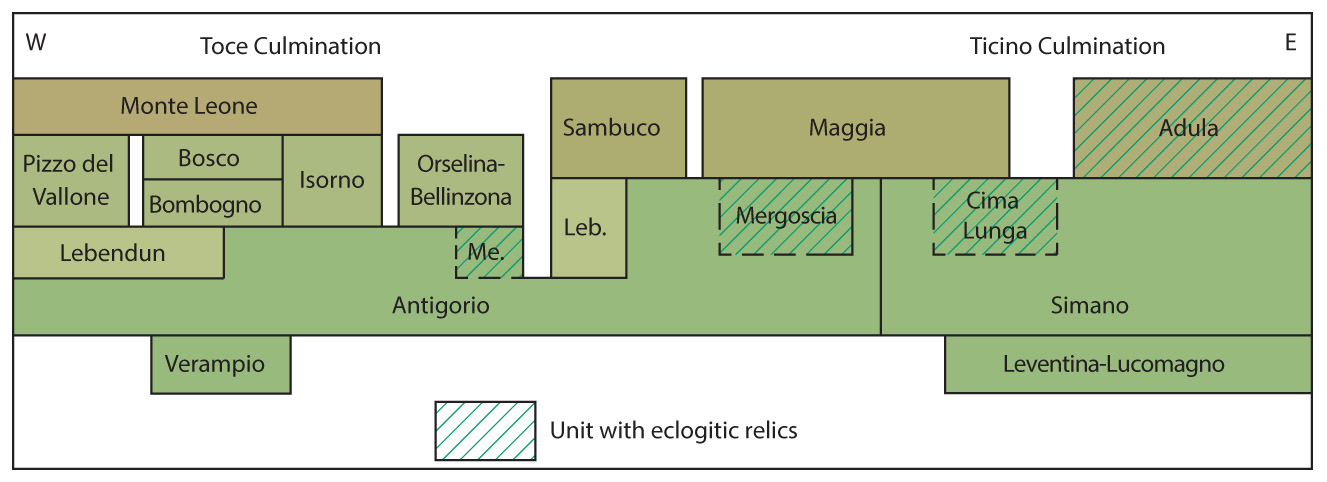Lepontic
Représentation et statut
- Couleur RGB
- R: 241 G: 239 B: 237
- Rang
- domaine tectonique
- Usage
- Ce terme est en usage.
- Status
- valide
- Scs Note
-
TK500
Nomenclature
- Deutsch
- Lepontikum
- Français
- Lépontique
- Italiano
- Lepontico
- English
- Lepontic
- Origine du nom
- Variantes historiques
-
groupe inférieur = groupe simplo-tessinois = anticlinal de Verampio et plis-nappes du Simplon (Argand 1911b), Lépontin, Lepontine Dome, Subpenninic (Milnes 1974, Schmid et al. 2004, Bousquet et al. 2012), Infrapenninic (swisstopo 1985), Lepontic domain = Lepontic nappes (Gouffon et al. 2024)
Hiérarchie et succession
- Unités sus-jacentes
- Unités sous-jacentes
Géographie
- Extension géographique
- Lepontine Alps between Simplon and Mesocco.
Paléogéographie et tectonique
- Paléogéographie
- domaine sud-helvétique
- Termes génériques
- Type de protolithe
-
- tectonique
- Métamorphisme
- non métamorphique
Références
- Définition
-
(2024) :
Tectonic Map of Switzerland 1:500000, Explanatory notes. Federal Office of Topography swisstopo, Wabern
The internal part of the Central Alps is characterized by the presence of a structural and metamorphic dome designated as the Lepontine Dome, occupying the geographic region known as the Lepontine Alps. It comprises nappes made up predominately of crystalline basement rocks, locally bounded by a thin autochthonous or parautochthonous Mesozoic sedimentary cover (syntheses in, e.g., Berger et al. 2005a, Steck et al. 2013). Most of these units are derived from the most distal part of the thinned European margin. For purely structural reasons, they have been described as Lower Penninic (e.g., Argand 1911, Presiwerk 1921, Niggli et al. 1936, Steck et al. 2013). However, because these units have a different paleogeographic origin from that of the other Lower Penninic units (Valaisan Basin), they have been termed “Subpenninic” (Milnes 1974b, Schmid et al. 2004, Bousquet et al. 2012), or “Infrapenninic” (Tectonic Map of Switzerland 1:500000, ed. 2005). These last two terms, meaning “below the Penninic”, are not appropriate because they do not designate a precise tectonic domain. The paleogeographic origin of these units is situated between that of the Helvetic units and that of the Penninic units. The internal structural position and the specific characteristics of the sedimentary cover – when present – of these units lead us to group them together in a new tectonic domain. As they occupy almost the entire structural Lepontine Dome, the term Lepontic is adopted here.

